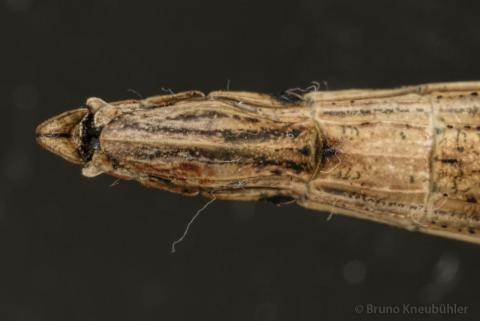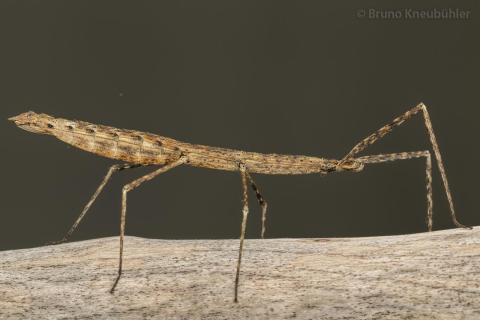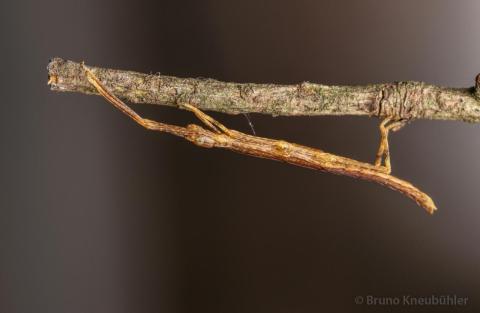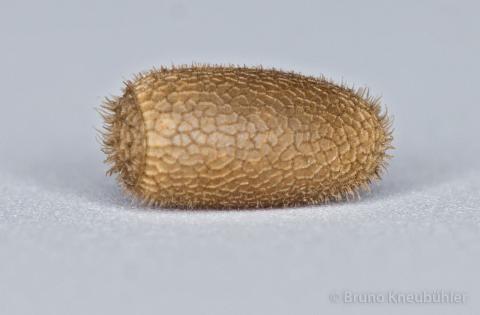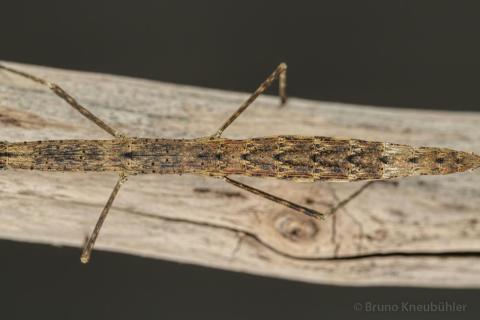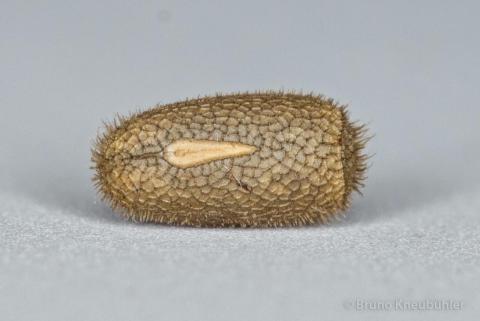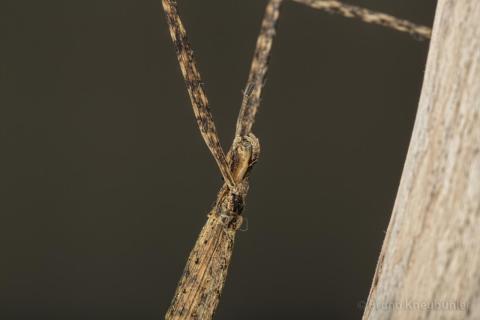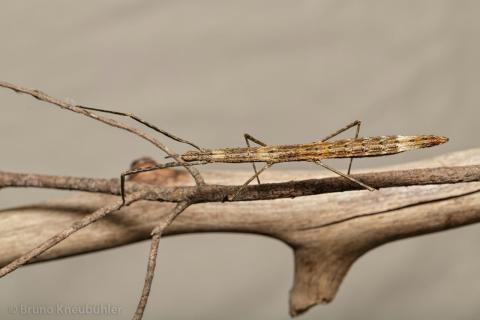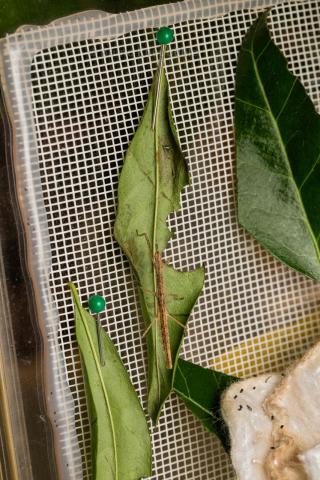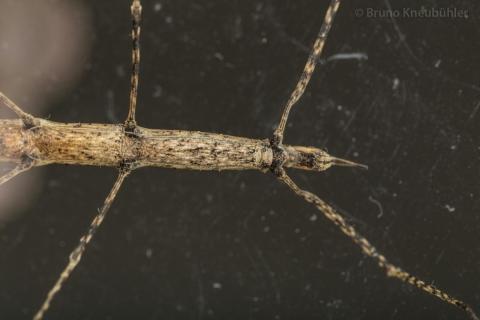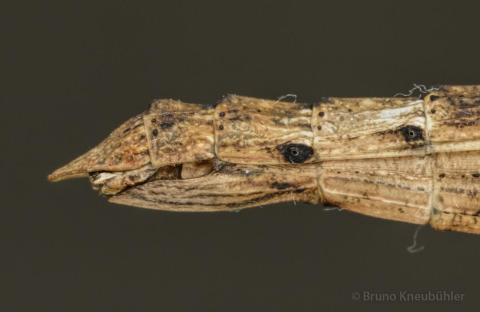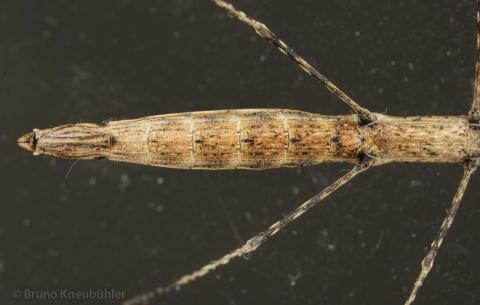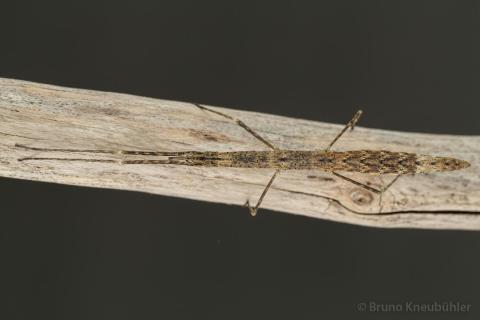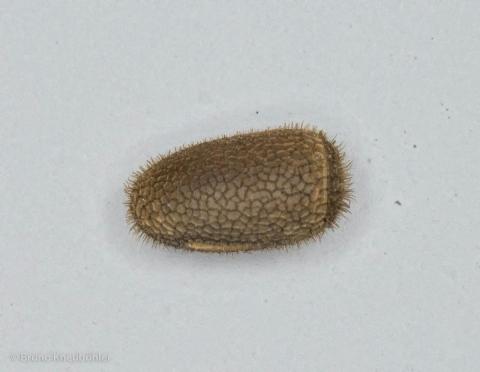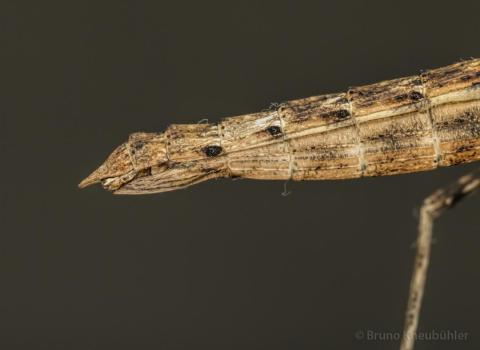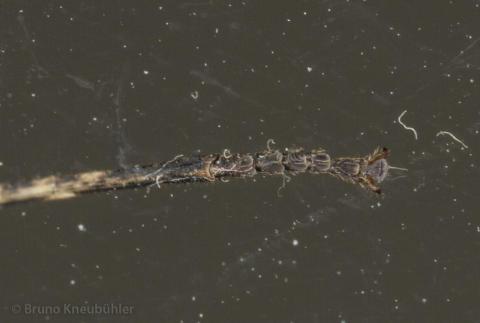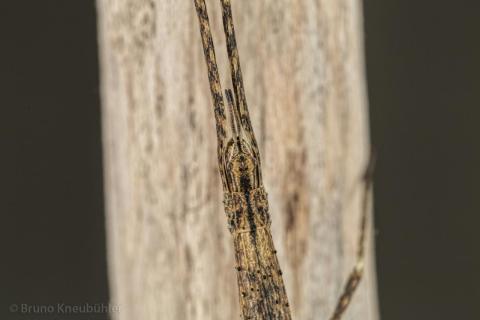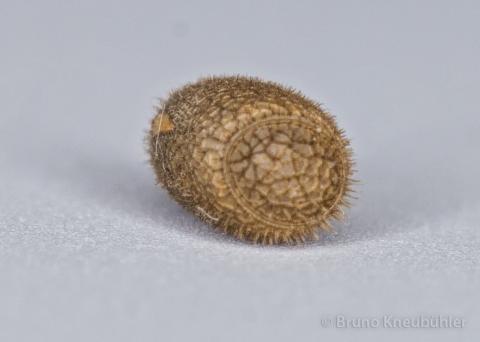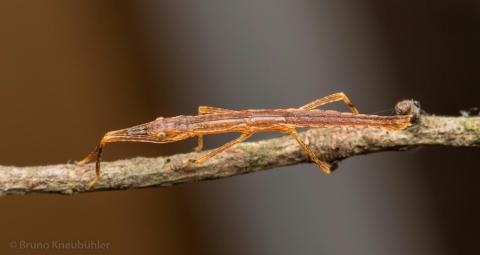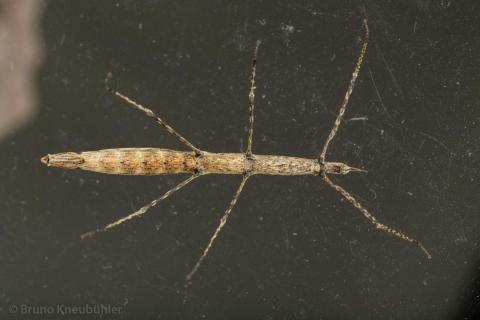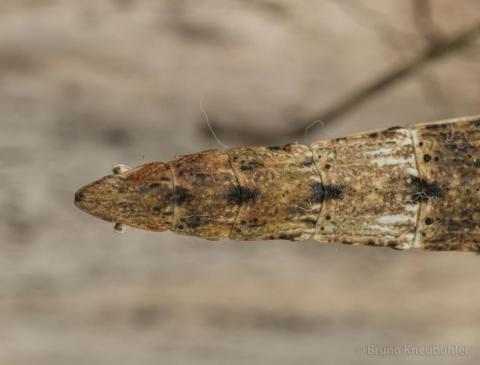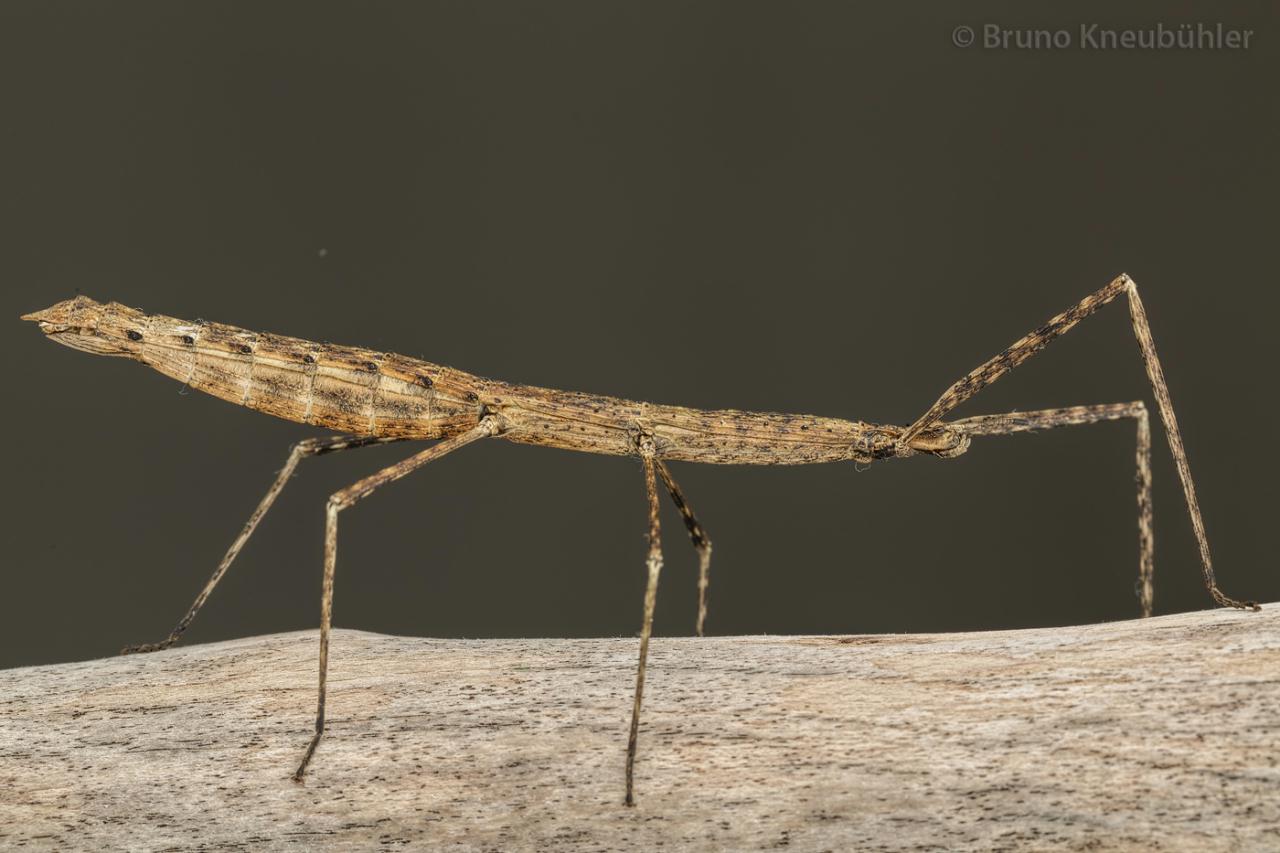
Species
Stock
Culture status
Unknown
Foodplants
Privet (Ligustrum spp.)
Salal (Gaultheria shallon)
Breeding notes
Antongiliinae sp. "Ambre"
(by Bruno Kneubuehler)
_________________
General Notes
- Nicolas Cliquennois (Madagascar) and Sven Bradler (Germany) are currently working on taxonomical aspects of this species
- it might have been described as Gratidia madagassa (Brunner v. Wattenwyl, 1907) already (info Nicolas Cliquennois)
- für weiterführende taxonomische Infos → Phasmida Species Files
_________________
Culture History
- 2014 - first culture (parthenogenetic, females only) by Bruno Kneubuehler
_________________
Origin
- Forêt D'Ambre (nothern Madagascar)
_________________
Females
- inconspicuous, typical phasmids
- about 6.5 cm
- bark-like brown colored
- few small tubercles on the thorax
- short antennae
- subgenital plate shorter than the abdominal ending
_________________
Nymphs
- about 11 mm (L1)
- reddish-brown (L1)
- sturdy
_________________
Eggs
- about 3 x 1.5 mm
- elongate-oval
- surface with net-like structure
- hairy, matt
- no distinct capitulum present on the operculum (lid)
- micropylar plate arrow-shaped
_________________
Food Plants
- it is recommendede to cut away the edges of the leaves for nymphs in L1
- regularly change the plants and the water in which they stand
- privet (Ligustrum spp.)
is very well accepted by nymphs and adults - Salal (Gaultheria shallon)
is very well accepted by adults (not tested with nymphs)
_________________
Behaviour
- nymphs as well as adult are passive during the day and out and about feeding at night
- if being touched they feign death
- no defense spray has been observed
- females prefer to stick their eggs into some soft substrate. In the cage this is the cotton plug which covers the vase for the food plants. Maybe this indicates that they prefer to stick their eggs into moss (also soft and humid) ?
_________________
Developement
- incubation time (HH-incubation on slightly damp sand at 20 - 23 °C) is about 3
- please note, that for phasmids it is not uncommon that some nymphs hatch a few or many months after the first nymphs hatched
- spread some dry (!) moss over the eggs - this will make it much easier for the nymphs to hatch unscathed and it also reduces mould growth to some extend
- females will be adult after about 4 months (at 20 – 23°C)
- females start laying eggs after about 2 – 3 weeks
- about 6 – 10 eggs per female and week
- adults can live for several months
_________________
Breeding Notes
- my general notes on how to breed phasmids are an integral part of this care sheet …
- it is recommend to keep this species in a seperate cage. The culture is much more likely to be successful than in an multi-species cage which are all too often badly crowed
- it is very easy to breed this species
- keep nymphs seperate from the adults. This makes it much easier to monitor their developement and they are protected from being disturbed or even harmed by the much bigger adults (like during their moults)
- keep the nymphs in a cage with good ventilation, but take care that the humidity does not drop too low
- a constantly wet paper towel on the floor of the cage helps raising humidity
- a humidity level of about 60+ % rH (for adults) and 75+ % rH (for nymphs) seems to be fine
- nymphs can be kept in a Faunabox (or similar cages like Faunarium)
- move nymphs to a bigger cage as they grow bigger
- a cage of at least 20 x 20 x 20 cm height should be provided for about 8 adult females
- I have never sprayed nymphs, adults or their cage with water
- make sure that nymphs, which are about to undergo their adult moult, do not find places in the cage which would not offer them enough space beneath to moult successfully
_________________
References
- Phasmida Species Files (www.phasmida.orthoptera.org)
